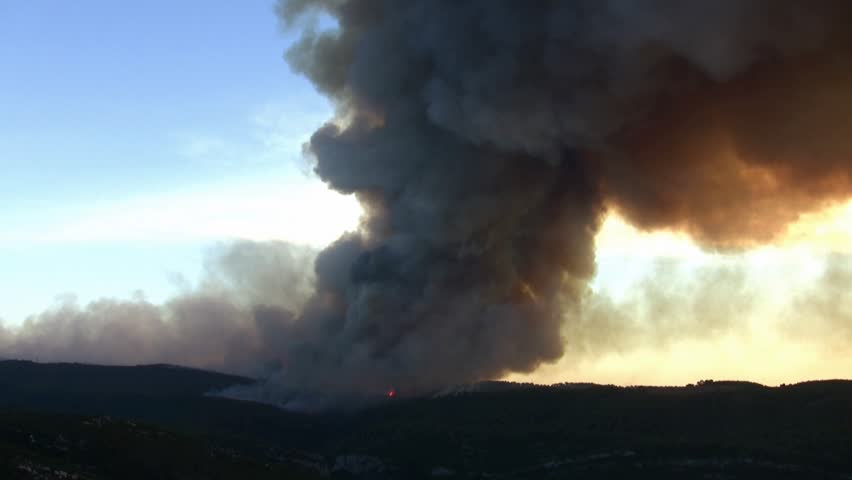
The devastating Camp Fire that engulfed Paradise last year started on November 8 and was not contained until November 25. The fire's toxic plume blocked out the sun, inundated the Northern Central Valley, and blanketed the Bay Area. In the absence of offshore winds, the Air Quality Index (AQI) for Berkeley hovered in the "Unhealthy" range between 151 and 200 for many days. For brief periods, Berkeley's AQI exceeded 200. These "Very Unhealthy" periods were on par with Beijing smog levels in spite of the fact the fire was located more than 140 miles away. When the AQI exceeds 150, anyone can experience adverse health effects, not just those belonging to "Sensitive Groups." The key to protecting yourself is to limit exposure.
Before the next fire strikes, the employee-owners of Sun Light & Power urge you to invest in the right respirator while stocks and prices are favorable. We recommend you keep masks in your car, desk, and backpack/purse, in addition to your home. Foldable masks are cheap and easy to carry. However, most of them lack a tacky lining to create a good seal, and, are fitted with poor quality straps which can easily break. Instead, consider investing in a reusable "half face" respirator body with strong secure straps that can accept a variety of replaceable filters. Regardless of your choice, an exhaust valve is an essential feature of any respirator because it will greatly reduce the amount of heat and moisture in your nose and mouth, making it much more comfortable to wear for an extended period of time. If you wear glasses or eye protection, you will need the exhaust valve to prevent fogging.
Be sure to only purchase NIOSH approved respirators, which are certified to filter dangerous particulate matter of 2.5 microns or smaller. These masks are always fitted with two straps. Secure the straps as directed – do not loop the straps loosely behind your ears. Surgical masks will not protect you because they are designed to contain germs rather than filter contaminated air. There are a surprising number of counterfeit NIOSH products on the market. Always look for the NIOSH logo and certification number on the box and the mask. Beware of labeling tricks like "NISH." Order top brands such as 3M from trusted sources, and scrutinize fashionable 'hi-tech' masks carefully. If you have a beard, be prepared to shave/trim to achieve the proper seal.
For good (but by no means complete) protection from wildfire smoke, purchase a respirator with a minimum rating of 95. This number refers to its particle filtering efficiency percentage. Respirators with higher ratings such as 99 and 100 are also available. Because these higher rated filters will make breathing slightly harder, (especially if you are performing hard physical work) they are not the best choice for everyone. The efficiency rating is preceded by a letter such as N, R, or P, which refers to the respirator's oil resistance capability. N-rated respirators/filters cannot filter any oil-based particles. While R-rated units offer some protection, the P-rated products offer the best protection. Bicyclists who don't like to breathe car exhaust fumes may benefit from the advanced filtration of a P100 mask.
While cloth masks may be sufficient for protection indoors, a silicone/plastic respirator body is a better investment because the seal and filter options are far superior. These products are not as heavy, uncomfortable, and expensive as you might think. The bodies come in several sizes and have superior exhaust valves. Replacement filters/cartridges are available in the same ratings as other NIOSH masks. However, these masks also have advanced particle filtration options including enclosed plastic cartridges which will tolerate high temperatures, and will not clog when wet.
While some good cloth masks could serve you for a long time, don't expect that your old mask and straps are still useable – give them a close inspection. If you have a respirator body, remove the filters and wash the entire assembly with warm soapy water or as directed to kill germs and freshen the seal. Test it for negative pressure and check your filter rating – it might be time to upgrade. Consider outfitting everyone in your household with the correct size of the same model so the filters are interchangeable. There are many affordable bundle options available.
Gases and particles released during wildfires are toxic and pose long-term health risks, even when no man-made materials are involved. The respirators discussed here are not intended to protect you from gases or replace industrial full-face units or emergency breathing equipment. The closer you are to the source of a fire the more important it will be to limit your exposure by evacuating, remaining indoors, and/or wearing an approved NIOSH respirator. If you must go outside use your highest rated respirator. Even if you live/work many miles from the fire line you may also need an appropriately sized true HEPA air filter with a robust carbon layer capable of filtering wildfire smoke for your home/business. A good home air filter at home will help protect you will you sleep and provide comfort all day.
With wildfire frequency, size, and duration on the rise don't wait to prepare your wildfire kit – you may need to evacuate at any time. In addition to emergency supplies, such as water, energy bars, a first-aid kit and a flashlight, your kit should include a properly sized NIOSH certified N95 or better respirator for every member of your family.
Seamas Brennan is a Blog Contributor, Researcher, and Engineering Admin. Assistant at Sun Light & Power